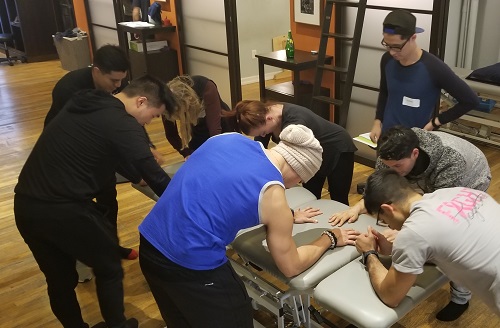It was an honor to spend Veteran’s Day Weekend with a fantastic group of movement professionals. On Sunday November 11, the 100 year anniversary of the end of WW I, we took a moment to honor those who have served our country.
With the sounds of the Veteran’s Day Parade outside, we spent most of our Sunday in lab. We were fortunate to have a large group of attendees, roughly half of whom had not been a PRI class before. We had the time to do a repositioning lab, spend over two hours on the Hruska Adduction and Abduction Lift tests in detail, and then follow that up with another lengthy lab of progressing through PRI non-manual activities. Not often do we have the opportunity to have so much lab time, and then carve out some time to discuss and demonstrate how to get an individual from a PEC pattern into a L AIC pattern, for those who were new to PRI.
My great thanks to my lab assistants, Neal Hallinan, PRT, and Sean Light, PRT, who were invaluable with such a large group. I would also like to thank Damian Estrada, Yelena Gremban, Matthew Zimmerman, Tara Lewis, and Beth Lewis for their questions, re-states, and volunteering during our lab demonstrations.

We were able to navigate our way through normal and pathological mechanics, the myokinematic ramifications of being stuck in a L AIC pattern, and we were able to progress into assessment of patterns and pathology of patterning. Which allowed us to spend as much time as we did to the Hruska Abduction and Adduction Lift tests and non-manual activities.
Yes, neurology is a complicated topic. And understanding the link between the hamstring and the parasympathetic nervous system is an enormous paradigm shift. I appreciate and empathize with the difficulty that concept presents, particularly to those who have been trained in this wonderful country of ours. However, I would encourage those who are new to PRI to not completely dismiss this concept because it challenged your preconceived notion of neurology and muscular behavior. Thank you for such a memorable conclusion of my 2018 teaching calendar.
I am already looking forward to 2019!



